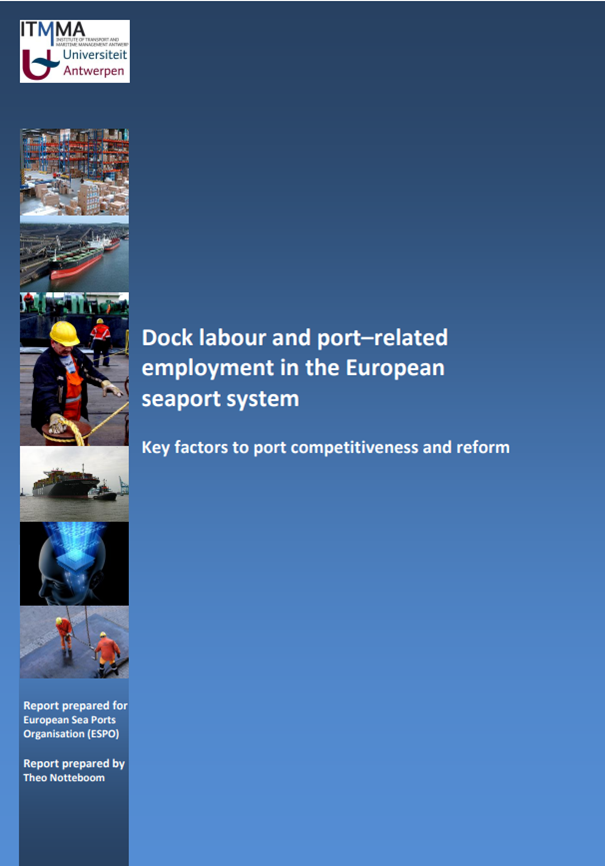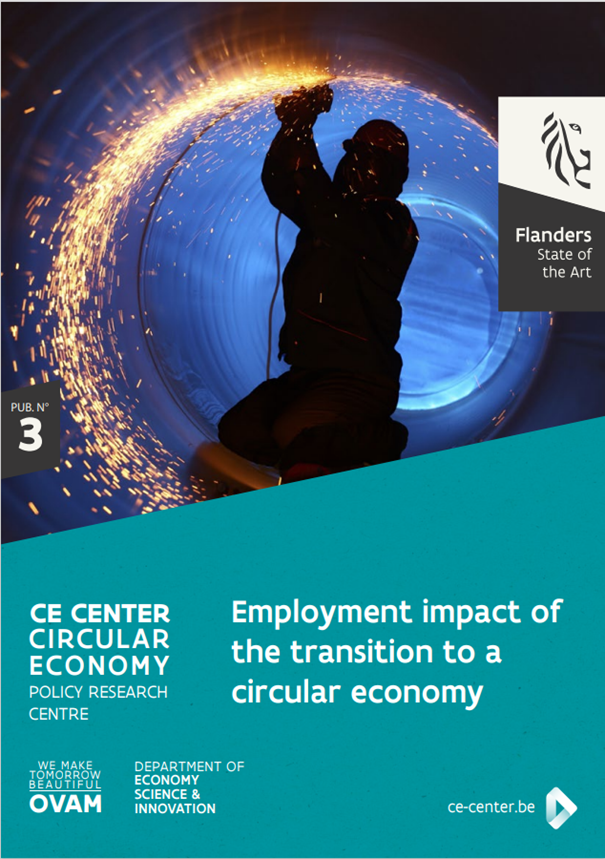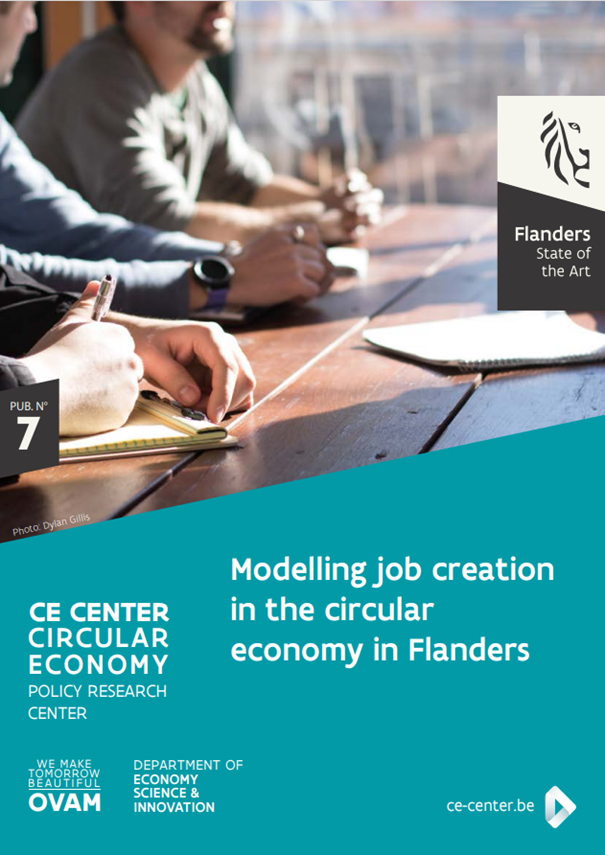Making insights actionable
In-depth and frequent surveys by Port Management Bodies (PMBs) and among port companies can reveal indications about specific jobs and new required capabilities and skills in the circular economy. But a ratio (relating circular jobs to the former non-circular jobs they are replacing) is unlikely to be measurable. Any researcher would have to rely on the willingness of (HR-managers of) port companies to collaborate for these data. PMBs can however play a crucial role in including key circular job related questions in their annual surveys among their clients in the port area.
This wider research question also links to:

Context
Seaports and inland ports provide significant direct and indirect employment, nearly 9% of employment in the Flemish Region (2018). These include employment related to storage and transhipment in the ports, the logistics via various modes, and employment in port-based companies in manufacturing, trade and services. However, a major challenge is how sustainability transitions, such as the energy transition and the circular economy, together with digitalization and automation, will change the labour market in ports. De Langen and Sornn-Friese (2019) discussed how the circular economy affects supply chains by becoming more local and how this in turn affects ports. The potential reduction of global supply chains will negatively affect throughput and the composition of ports’ cargo volumes. At the same time, this will also change the nature and mix of activities at ports. This in turn will affect the business model of port operators (as most ports derive significant financial value from cargo volumes, i.e. port fees paid by shipping companies), organization and possibly the absolute number and type of jobs in the port area itself.
The shift to a circular economy will affect the port labour market: some jobs will disappear or change in nature, new circular jobs will emerge, certain combinations of skills will become more important, and workers and employers will need to develop new ways of thinking and skills to adapt to this changing environment. It is difficult to predict exactly what it will look like in 5 years or more. Therefore the port labour market will have to anticipate this to avoid a mismatch between supply and demand as much as possible.
Measuring employment impact of ports
Ports in the Dutch and Belgian Delta have for many years enjoyed the work done by the Belgian National Bank, calculating and reporting yearly on the added value and employment impact of the Belgian ports, and by UPT Erasmus (funded research by the Dutch Ministry of Infrastructure and Water) reporting also on these parameters in the Dutch Port Monitor (‘Havenmonitor’).
These studies include a thorough calculation of port related direct and indirect employment and value added based on macro statistics, and are refined to the port level in a robust way. The outcome of these studies is widely recognized and used to support port investments and volume growth, and could be considered as a fundamental stakeholder support mechanism for ports in the Delta region. These calculations do require a lot of resources and the frequency of publication, or even its continuation at all, at least in Belgium, is therefore at stake.
Insights summarized
Some general studies on job creation and circular economy are promising, such as in Circular Jobs Initiative, Willeghems and Bachus (2018, 2019), Chateau and Mavroeidi (2020), Sulich and Sołoducho-Pelc, (2022), and Munos et. al., 2022. Most of these studies refer to an absolute increase in number of circular jobs created, but do not compare to the linear jobs lost in general or replaced by circular jobs.
There is currently much to discover about what the circular transition will mean in ports, more specifically for employment (Haezendonck and Van den Berghe, 2020).
The impact of the circular transition on port employment is certainly a key indicator to monitor. Besides the absolute and relevant number of jobs, the variety of skills needed for circular jobs, the training provided, the extent to which we are preparing our labour market for this transition etc, are also part of a broader social analysis of the circular transition in ports. In light of the growing ‘war for talent’ between our industries, the question is whether circular jobs are attractive enough and whether they require specific skills to be built in general education programmes or with on-the-job training.
The PMBs also set employment targets in the circular economy. An external study ‘Circular Transition Pathway’ (Econopolis, 2021) examined how the port in the Ghent Canal Zone could become carbon-neutral by 2050 and to what extent this would create economic opportunities. Econopolis expects large-scale re-shoring of industrial activities. Local production of secondary (recovered, reusable) raw materials will generate more jobs, added value and exports. It expects that by 2035 a further expansion of green basic industry could almost double the number of jobs in Ghent. It is not clear whether these ‘prospects’ also have the status of strategic objective with accompanying indicator and baseline.
We learned however from the exploratory research that it is poorly feasible – or at least quite complex – to obtain detailed figures of the exact number of CE-related jobs, and certainly not in relation to the number of linear jobs they replace. That replacement ratio is what would be most interesting in terms of social impact of the transition.



